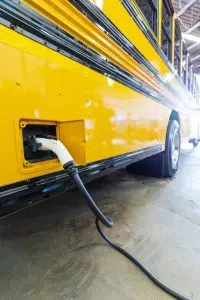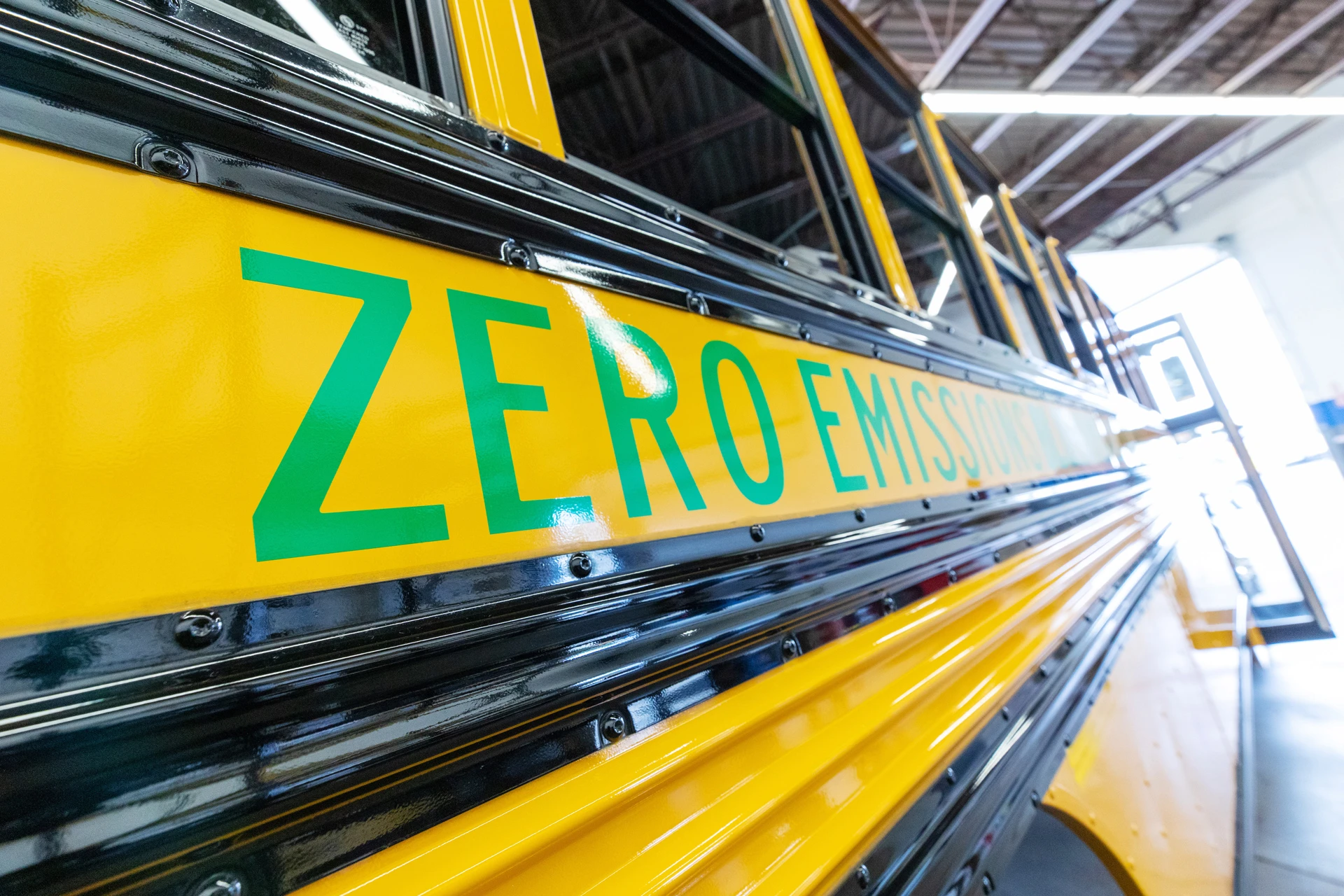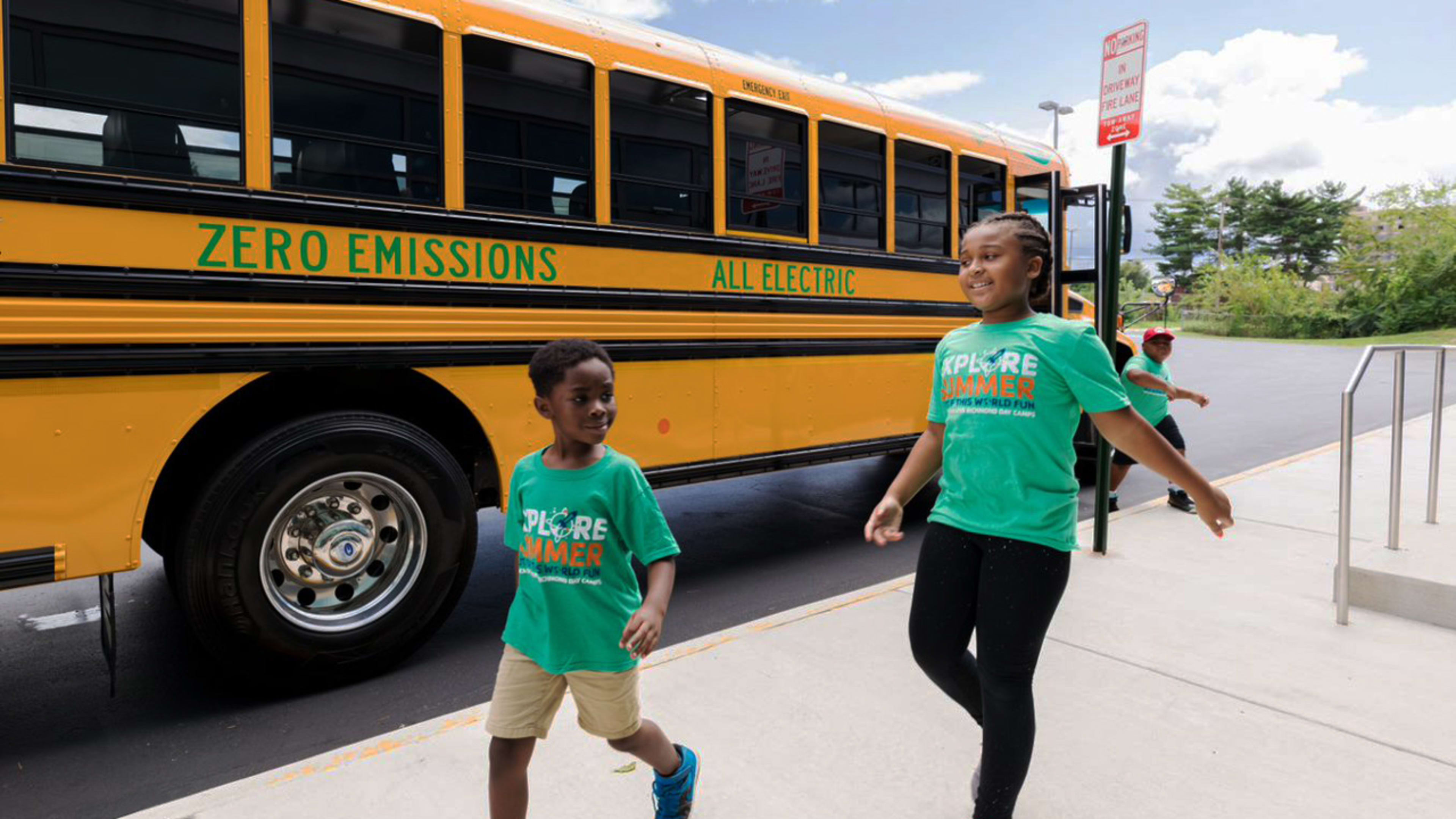There are 480,000 school buses on the road in the U.S., more than any other form of mass transportation. Despite the climate and health risks, most still run on diesel. While some school districts want to switch to electric buses, the costs can be very high for cash-strapped educational systems. But in Virginia, a local utility company wants to help foot the bill and make use of the batteries in the buses to store power for the grid.
Dominion Energy, an energy-service company that operates in eight states, plans to help all of the school districts in its service area in Virginia go electric, with 50 school buses by the end of 2020, a total of 1,000 by 2025, and a fully electric fleet by 2030. It’s already the largest deployment of electric school buses in the country.

“They really have a unique usage pattern in that they’re not used 180 days of the year,” Webb says. “The times that they are used are very predictable. They run the same schedule during the school year, for the most part, morning and afternoon. They’re idle 180-plus days for every year and they’re idle every weekend.” They also tend to be stored in the same place. “When you know where they’re located and when they’re available, it really opens the new door of possibilities for the use of those batteries for broader purposes than just powering the school bus.”
With 1,000 buses, for example, the batteries can store enough energy to power roughly 10,000 homes. The utility can begin to use the batteries to store excess wind and solar power. On a hot day in the summer, when people crank up air conditioners and energy demand peaks, the buses can act like a miniature backup power plant to cover the extra demand.
Over the lifetime of a bus, school districts can save money on fuel and maintenance costs by choosing electric vehicles; the utility estimates that these costs can be as much as 60% lower each year. While the upfront cost is still higher, the utility will cover the extra cost itself, including the installation of electric chargers, because of the value of the buses for the grid. The batteries can also have a second life in energy storage after the buses wear out. “We’re able to absorb that cost by valuing what it means to us as a utility and then relieving the school system of that cost,” says Webb.

Other utilities are launching similar pilots. In New York, Con Edison is testing five electric school buses, equipped with batteries that can send power back into the grid. Con Edison estimates that if all of the buses in New York City and Westchester County went electric, it could cut 185,000 tons of greenhouse gas emissions each year. In California, the state plans to replace 200 diesel buses with electric buses.
The changes can also improve children’s health. While the newest diesel buses are less polluting than earlier models, electric buses can completely eliminate pollution that can aggravate asthma and cause other health problems. One study that compared old diesel buses to the newest diesel buses found that English test scores significantly improved when school districts shifted to less-polluting technology. “We view the benefits that the kids will see from far better indoor ambient air quality on the bus as a tremendous public health benefit,” Webb says.
Recognize your brand’s excellence by applying to this year’s Brands That Matter Awards before the early-rate deadline, May 3.
